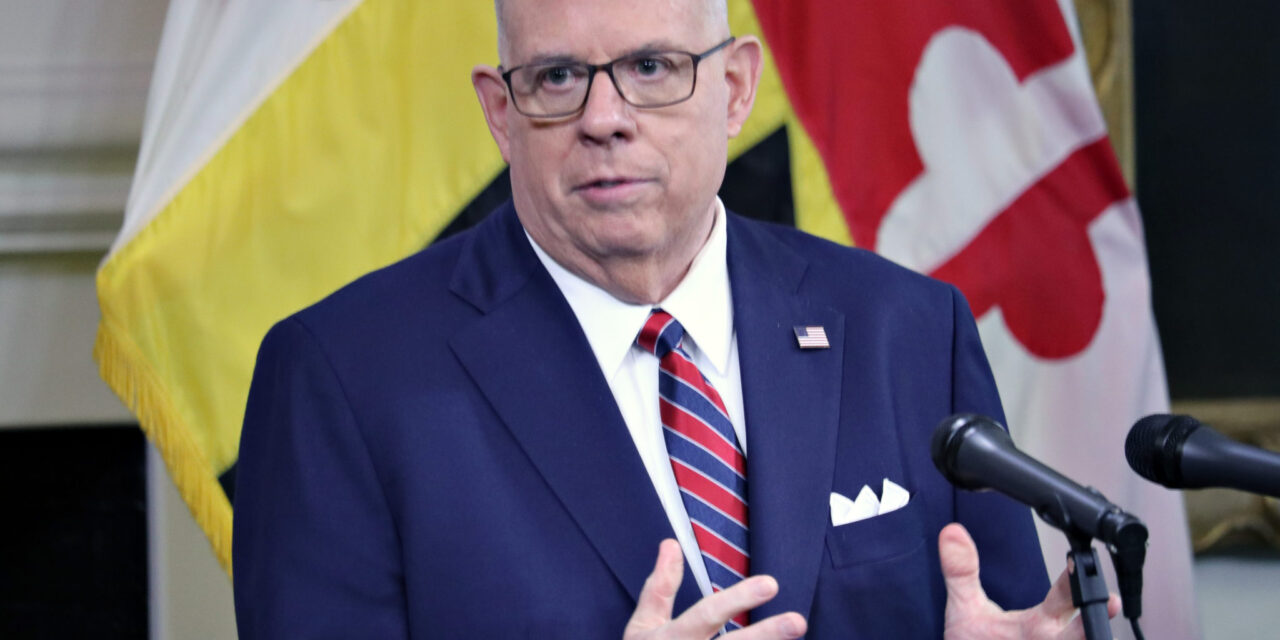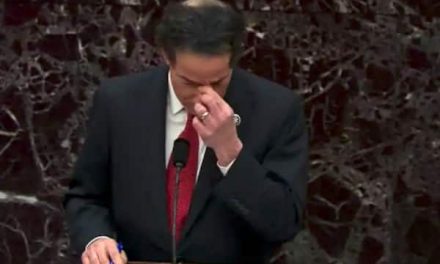Image Credits: Brian Witte.
If you’re familiar with my old Washington Monthly colleague Eric Cortellessa’s work on outgoing Maryland governor Larry Hogan, you know he’s got a little bit of Donald Trump in him, and a little bit of Spiro Agnew, too. But that doesn’t change the fact that he’s entering retirement with incredibly good approval numbers.
A recent poll conducted for Gonzales Research & Media Services, an Arnold-based polling firm, showed Hogan leaving office with an eye-popping 77% of Marylanders approving of the job he’s doing as governor. That’s just one tick below the 78% high-water mark he received two other times in the Gonzales poll, which has been tracking Hogan’s popularity since January 2016, a year after he became governor.
In the poll, Hogan had an astonishing 81% job approval rating among Democrats — 13 points higher than it was among Republicans. Seventy-six percent of non-affiliated voters said they approved of the job Hogan is doing. Equally significant, Hogan’s job approval rating among Black voters was at 81%, compared to 76% for white voters.
As far back as January 2020, Cortellessa noted that “Never Trump” Republicans had been trying to recruit Hogan to run for president “for years” because “He’s won two gubernatorial elections in Maryland, where Democrats outnumber Republicans two to one; he’s currently one of the most popular governors in America; and he’s widely viewed as a moderate who’s willing to reach across the aisle.”
These are valuable attributes to have in a general election matchup against a Democratic presidential candidate. The problem is right there in the polling numbers, however, where Hogan is more popular with Democratic (81 percent) voters than he is with independents (76 percent), and more popular with independents than he is with Republicans (68 percent). He’s wildly popular, but almost one in three Republicans surveyed don’t think he’s done a good job, while fewer than one in five Democrats give him bad marks.
It used to be the case not all that long ago that there was a major qualitative difference between the average Republican voter in deep red states and Republican votes in the Mid-Atlantic and New England. This was represented by the splits between Nelson Rockefeller and Barry Goldwater supporters, and later George H.W. Bush and Ronald Reagan supporters. But sometime after the internet took hold of our culture, these differences started to dissipate.
I don’t know what all explains it, but in my first major post-2020 presidential election analytical piece, a November 10, 2016 article in the Washington Monthly, I warned about the GOP’s strategy to “southify the north.” I gave two important earlier warnings: The GOP is Moving in the Wrong Direction in July 2013 and Trump and the Missing White Voters in December 2015. Both of those pieces predicted that the Republicans who abandon any effort to moderate their racial attitudes in the aftermath of Mitt Romney’s defeat and would instead focus on getting white voters to see themselves as more of a racial interest group, with the Republicans as their saviors and defenders. Trump’s campaign was the fulfillment of that prophesy.
Today, I don’t think there are meaningful differences between Oklahoma and Maryland Republican base voters. Both are voting primarily on the basis of their white race, and then secondarily on reflexive Republican legacy positions on things like taxes and small government. The big cultural differences between the Bible Belt and the mid-Atlantic and New England are smoothed over by this new emphasis on anti-woke white identity, as well as the fact that Republicans everywhere are receiving the same political messaging through television, radio, and social media.
Ironically, and unfortunately, by deemphasizing traditional country club Republican issues, the party is actually doing a better job of attracting minority support, even though talk about free trade and a strong national defense have been replaced by a fascistic white Christian nationalism that should terrify minorities more than ever.
In any case, politicians like Hogan still exist in very small numbers and can win massive support, but the GOP isn’t at all interested in having them as party leaders or standard bearers. They are interested in the fight for white Christian cultural and political supremacy, and a Republican who doesn’t want to lead that fight is incapable of giving them the kind of victories they crave.
Maybe if the Electoral College hadn’t delivered the White House to George W. Bush and Donald Trump the Republicans would be more focused on the fact that they have only won the popular vote in once presidential election since 1988. If we’d had an uninterrupted period of Democratic presidents from 1993 to the present day, then I think Larry Hogan would have a great shot at winning the Republican nomination, because he’s obviously very popular with his home state Democrats as well as non-affiliated voters. The same kind of logic in reverse helped Bill Clinton win the nomination in 1992 after 12 years of Republicans in the White House. Democrats were sick of losing so a southern governor with some charisma and crossover appeal seemed like a better bet than another liberal in good standing from Minnesota or Massachusetts.
The Republicans are not desperate enough to trim their sails in search of any victory they can get, so Hogan doesn’t have a realistic shot at winning the nomination in 2024. That’s a good thing for the country because he’s a bit of a crook, and it’s a good thing for the Democrats because he’d probably smoke Joe Biden.







